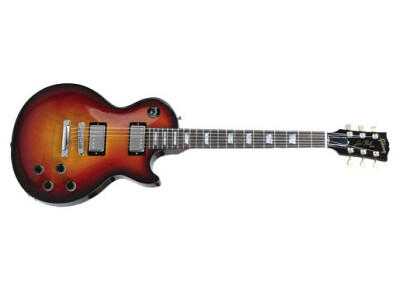Where to buy Les Paul Studio (2012)?
Less
There are no classified ads for this product.
Tech. sheet
- Manufacturer: Gibson
- Model: Les Paul Studio (2012)
- Series: Les Paul
- Category: LP-Shaped Guitars
- Other names:les paul studio 2012, lespaulstudio 2012, lespaulstudio2012, les paul studio2012, lespaul studio 2012, les paul studio 20 12, lespaulstudio 20 12, lespaulstudio20 12, lespaul studio2012, les paul studio20 12
We have no technical specifications for this product
but your help will be much welcomed
»
Videos
User reviews
4.5/5(24 reviews)
5
58 %
4
33 %
3
8 %
2
1
A superb guitar
Published on 09/24/14 at 13:24- Mahogany body
- Maple top
- Mahogany neck
- Granadillo fretboard (an interesting rosewood alternative)
- Standard Gibson 24.75" scale with 22 frets
- Neck pickup: Gibson 490R Humbucker
- Bridge pickup: Gibson 498T Humbucker
- 2 volume and 2 tone controls
- Made in the USA
- Lefty version, in my case
UTILIZATION
This guitar isn't what I would call light, but it's also not extremely heavy. It can be easily carried with a good strap and it doesn't tip down, which is a good point.
The neck is nice, its '50s profile allows fast playing much better than my Epiphone Les Paul Custom. Access to the upper frets is good but it requires some time to get used to it, especially if you have your...…
- Maple top
- Mahogany neck
- Granadillo fretboard (an interesting rosewood alternative)
- Standard Gibson 24.75" scale with 22 frets
- Neck pickup: Gibson 490R Humbucker
- Bridge pickup: Gibson 498T Humbucker
- 2 volume and 2 tone controls
- Made in the USA
- Lefty version, in my case
UTILIZATION
This guitar isn't what I would call light, but it's also not extremely heavy. It can be easily carried with a good strap and it doesn't tip down, which is a good point.
The neck is nice, its '50s profile allows fast playing much better than my Epiphone Les Paul Custom. Access to the upper frets is good but it requires some time to get used to it, especially if you have your...…
Read more
- Mahogany body
- Maple top
- Mahogany neck
- Granadillo fretboard (an interesting rosewood alternative)
- Standard Gibson 24.75" scale with 22 frets
- Neck pickup: Gibson 490R Humbucker
- Bridge pickup: Gibson 498T Humbucker
- 2 volume and 2 tone controls
- Made in the USA
- Lefty version, in my case
UTILIZATION
This guitar isn't what I would call light, but it's also not extremely heavy. It can be easily carried with a good strap and it doesn't tip down, which is a good point.
The neck is nice, its '50s profile allows fast playing much better than my Epiphone Les Paul Custom. Access to the upper frets is good but it requires some time to get used to it, especially if you have your guitar below the ankles!
The tuners hold the pitch pretty well, I was very surprised by their effectiveness! It stays in tune even if you play really aggressively, so you won't need to tune the guitar every two chords, like on some guitars.
The pickups were a great surprise! When I first bought the guitar I thought about changing them, but I finally kept them. I play essentially metal and they suit my needs, besides being splittable and having a very convincing sound.
I also recommend you to get a straplock, regardless of the guitar. It will avoid ugly surprises on the varnish and the painting!
SOUNDS
As I said before, I play essentially metal, but I also play blues and rock, and the pickups are up to standard! Except maybe for extreme styles, but that's a matter of taste, too!
The neck pickup renders a wonderful clean sound with a triaxis and a chorus, to play nice ballads. In split mode the sound remains very good. A good point is that the volume is almost the same, regardless of whether you use it as a single-coil or a humbucker, and the same goes for the bridge pickup.
In lead mode, the neck pickup allows you to play great solos, it is round and warm, without being muddled. You can even try more high-voltage things while always having a good precision and a good dynamic response.
The bridge pickup is, in my opinion, great to play rhythm guitar. It's precise without being sharp, it allows you to play different styles from blues to metal!!
It also comes out pretty good with clean sounds, and it's even better in split mode, you can easily find Ennio Morricone "western"-like sounds. But that's not its main strength, a strat would certainly do better.
I play with a Mesa Boogie Triaxis preamp and a cab with G12T75 speakers to get a Master of Puppets sound! It's perfect for me!
OVERALL OPINION
I bought it in an auction for $900 in January 2014 and I'm more than thrilled with it. It's my first Gibson and my first mid-range guitar. I now find it difficult to use my other guitars!
What I like best: The SOUND and look!
The Studio series is a good value for money and secondhand it's even better!
Don't let its lower price in relation to a Standard nor the fact that it's a Studio model deceive you. This guitar has all the features of a Standard without the flame maple top nor the body and neck binding, that's why it's less expensive!
- Maple top
- Mahogany neck
- Granadillo fretboard (an interesting rosewood alternative)
- Standard Gibson 24.75" scale with 22 frets
- Neck pickup: Gibson 490R Humbucker
- Bridge pickup: Gibson 498T Humbucker
- 2 volume and 2 tone controls
- Made in the USA
- Lefty version, in my case
UTILIZATION
This guitar isn't what I would call light, but it's also not extremely heavy. It can be easily carried with a good strap and it doesn't tip down, which is a good point.
The neck is nice, its '50s profile allows fast playing much better than my Epiphone Les Paul Custom. Access to the upper frets is good but it requires some time to get used to it, especially if you have your guitar below the ankles!
The tuners hold the pitch pretty well, I was very surprised by their effectiveness! It stays in tune even if you play really aggressively, so you won't need to tune the guitar every two chords, like on some guitars.
The pickups were a great surprise! When I first bought the guitar I thought about changing them, but I finally kept them. I play essentially metal and they suit my needs, besides being splittable and having a very convincing sound.
I also recommend you to get a straplock, regardless of the guitar. It will avoid ugly surprises on the varnish and the painting!
SOUNDS
As I said before, I play essentially metal, but I also play blues and rock, and the pickups are up to standard! Except maybe for extreme styles, but that's a matter of taste, too!
The neck pickup renders a wonderful clean sound with a triaxis and a chorus, to play nice ballads. In split mode the sound remains very good. A good point is that the volume is almost the same, regardless of whether you use it as a single-coil or a humbucker, and the same goes for the bridge pickup.
In lead mode, the neck pickup allows you to play great solos, it is round and warm, without being muddled. You can even try more high-voltage things while always having a good precision and a good dynamic response.
The bridge pickup is, in my opinion, great to play rhythm guitar. It's precise without being sharp, it allows you to play different styles from blues to metal!!
It also comes out pretty good with clean sounds, and it's even better in split mode, you can easily find Ennio Morricone "western"-like sounds. But that's not its main strength, a strat would certainly do better.
I play with a Mesa Boogie Triaxis preamp and a cab with G12T75 speakers to get a Master of Puppets sound! It's perfect for me!
OVERALL OPINION
I bought it in an auction for $900 in January 2014 and I'm more than thrilled with it. It's my first Gibson and my first mid-range guitar. I now find it difficult to use my other guitars!
What I like best: The SOUND and look!
The Studio series is a good value for money and secondhand it's even better!
Don't let its lower price in relation to a Standard nor the fact that it's a Studio model deceive you. This guitar has all the features of a Standard without the flame maple top nor the body and neck binding, that's why it's less expensive!
See less
00
»
needs upgrades
Published on 01/29/12 at 18:35Carved maple top
Mahogany body with chambered weight-relief
Mahogany neck, '50s Rounded Les Paul
Rosewood fingerboard (Ebony on Alpine white)
22 frets
Corian nut
Nashville Tune-O-Matic bridge with stopbar
Chrome or gold hardware
490R and 498T Alnico 2 magnet humbucker pickups (BursBucker Pro on faded models)
2 volume and 2 tone knobs with black speed knobs, 3-way switch
Vintage-style 14:1 tuners with perloid buttons
UTILIZATION
First of all, I have the black and gold one which I happen to think is one of the classier looking les paul studios. But at this price point I don't think it's fair to get hung up on looks really. There is a lot of debate on how much of a maple cap exactly is...…
Mahogany body with chambered weight-relief
Mahogany neck, '50s Rounded Les Paul
Rosewood fingerboard (Ebony on Alpine white)
22 frets
Corian nut
Nashville Tune-O-Matic bridge with stopbar
Chrome or gold hardware
490R and 498T Alnico 2 magnet humbucker pickups (BursBucker Pro on faded models)
2 volume and 2 tone knobs with black speed knobs, 3-way switch
Vintage-style 14:1 tuners with perloid buttons
UTILIZATION
First of all, I have the black and gold one which I happen to think is one of the classier looking les paul studios. But at this price point I don't think it's fair to get hung up on looks really. There is a lot of debate on how much of a maple cap exactly is...…
Read more
Carved maple top
Mahogany body with chambered weight-relief
Mahogany neck, '50s Rounded Les Paul
Rosewood fingerboard (Ebony on Alpine white)
22 frets
Corian nut
Nashville Tune-O-Matic bridge with stopbar
Chrome or gold hardware
490R and 498T Alnico 2 magnet humbucker pickups (BursBucker Pro on faded models)
2 volume and 2 tone knobs with black speed knobs, 3-way switch
Vintage-style 14:1 tuners with perloid buttons
UTILIZATION
First of all, I have the black and gold one which I happen to think is one of the classier looking les paul studios. But at this price point I don't think it's fair to get hung up on looks really. There is a lot of debate on how much of a maple cap exactly is on here. Some people say the quality of wood on these is not up to snuff with the higher end les pauls. Personally I don't think there's a lot to that. These feel about the same as my other higher end les paul guitars. That said, there are some issues with mine. The finish is not that great. After two years of touring it has seriously worn down. Also, the neck and fret work is not too hot for this price range. There is a lot of buzzing due to mis filed frets. Nothing a really good setup couldn't fix, but to be honest I have seen korean guitars which better fret work than this. Other than that it's solid. Pots work good. Stays in tune pretty well.
SOUNDS
I really really really don't care too much for the stock pickups that come in these. They are okay for hard rock but not much else. Couldn't Gibson have put in some burstbuckers or something decent? The fact is that a lot of players agree with me, this guitar needs a pickup change to sound good. Some guys like the stock pickups but even they usually admit they are just so so. I recommend 57 classics myself or something even better. With that, it becomes a pretty nice sounding instrument.
OVERALL OPINION
Gibson seems to miss a few details on these. I have owned a few and every one has some minor flaw or two. But the price is pretty good. I wish the fret work was better and they would put in some better pickups. But that's how these things work. I think these are better deals on the used market but they aren't terrible for what you pay new. Gibson quality is what it is. I have owned 4 or 5 so what does that tell you.
Mahogany body with chambered weight-relief
Mahogany neck, '50s Rounded Les Paul
Rosewood fingerboard (Ebony on Alpine white)
22 frets
Corian nut
Nashville Tune-O-Matic bridge with stopbar
Chrome or gold hardware
490R and 498T Alnico 2 magnet humbucker pickups (BursBucker Pro on faded models)
2 volume and 2 tone knobs with black speed knobs, 3-way switch
Vintage-style 14:1 tuners with perloid buttons
UTILIZATION
First of all, I have the black and gold one which I happen to think is one of the classier looking les paul studios. But at this price point I don't think it's fair to get hung up on looks really. There is a lot of debate on how much of a maple cap exactly is on here. Some people say the quality of wood on these is not up to snuff with the higher end les pauls. Personally I don't think there's a lot to that. These feel about the same as my other higher end les paul guitars. That said, there are some issues with mine. The finish is not that great. After two years of touring it has seriously worn down. Also, the neck and fret work is not too hot for this price range. There is a lot of buzzing due to mis filed frets. Nothing a really good setup couldn't fix, but to be honest I have seen korean guitars which better fret work than this. Other than that it's solid. Pots work good. Stays in tune pretty well.
SOUNDS
I really really really don't care too much for the stock pickups that come in these. They are okay for hard rock but not much else. Couldn't Gibson have put in some burstbuckers or something decent? The fact is that a lot of players agree with me, this guitar needs a pickup change to sound good. Some guys like the stock pickups but even they usually admit they are just so so. I recommend 57 classics myself or something even better. With that, it becomes a pretty nice sounding instrument.
OVERALL OPINION
Gibson seems to miss a few details on these. I have owned a few and every one has some minor flaw or two. But the price is pretty good. I wish the fret work was better and they would put in some better pickups. But that's how these things work. I think these are better deals on the used market but they aren't terrible for what you pay new. Gibson quality is what it is. I have owned 4 or 5 so what does that tell you.
See less
00
»
Les Paul Studio with Gold hardware
Published on 11/10/11 at 09:19The Les Paul Studio is like a line of guitars of its own now. Before all the faded guitars and what not the Studio was the original budget model. It has all the features of a real Les Paul but isnt a JR model. There are many variants of the Studio now and this one is the model with Gold hardware all around. The body is chambered mahogany now. If you get an old one it might not be chambered. The neck is a fat 50s mahogany neck. The fretboard on this model is rosewood. On the white model it is ebony. Older studio models have dot inlays while the newer ones have trapezoid inlays. The tuners up top are non locking as is the bridge. It comes with standard gibson 490R and 498T pickups. It has...…
Read more
The Les Paul Studio is like a line of guitars of its own now. Before all the faded guitars and what not the Studio was the original budget model. It has all the features of a real Les Paul but isnt a JR model. There are many variants of the Studio now and this one is the model with Gold hardware all around. The body is chambered mahogany now. If you get an old one it might not be chambered. The neck is a fat 50s mahogany neck. The fretboard on this model is rosewood. On the white model it is ebony. Older studio models have dot inlays while the newer ones have trapezoid inlays. The tuners up top are non locking as is the bridge. It comes with standard gibson 490R and 498T pickups. It has the standard Les Paul control layout with a volume and tone for teach pickup and a 3 way switch.
UTILIZATION
This guitar is pretty spartan all around. There is no binding anywhere and some of the fit and finish might be rough. I have seen un even frets on some Les Paul Studios. With the 50s style neck some players might have some problems. They have put the 50s profile Gibson neck on this guitar so the neck is huge. People call the 50s profile neck the baseball bat neck. This may make it hard for some people with smaller hands to play. Because of the set neck design there is a large neck tenon and joint. This can make the upper frets hard for some people to reach because the body essentially joins the neck at the 17th fret. After the 17th fret you are reaching around the body to get to the frets. Because there is no binding the guitar will be more likely to have sharp fret edges when you first get it.With the non locking tuners and non locking bridge you get the traditional problems. The it may go out of tune on you and when you change strings the bridge and tailpiece will fall off. With the Gold hardware it is more prone to tarnishing. If you do not clean it after every session it will turn black on you or green. Tarnished gold hardware doesnt look cool like dirty chrome hardware it just looks bad.
SOUNDS
With the generic Gibson pickups you get a generic modern Gibson sound. A generic Gibson sound from 60 years ago would be really good. But a modern Generic Gibson sound is not so good. A lot of the base tone is lost due to the chambering as well. The thick mahogany body is part of the Gibson tone. This guitar has a big chamber inside it and although they say this chamber doesnt affect tone it really does. Some of the thickness is gone on these chambered models. It is especially noticable when you try one out acoustically. A good acoustic base is the key to a good amplified tone. Guitars that sound bad acoustically can sound good amplified but if you have a good base everything beyond that gets better. The pickups are decent all around pickups. They are more voiced for classic rock. If you are playing a more specialized type of music like metal you may want to change the pickups.
OVERALL OPINION
The gold hardware on this model does not make it any better than the other studio models. I would not recommend this model over a normal Studio model. I would normally not recommend a studio at all. I would only recommend this model if you come across a good deal used. For the price of these guitars New you can get a much better Japanese guitar or a guitar from another company with much better features. Of if you want a Studio you can get a guitar with the same features for much cheaper.
UTILIZATION
This guitar is pretty spartan all around. There is no binding anywhere and some of the fit and finish might be rough. I have seen un even frets on some Les Paul Studios. With the 50s style neck some players might have some problems. They have put the 50s profile Gibson neck on this guitar so the neck is huge. People call the 50s profile neck the baseball bat neck. This may make it hard for some people with smaller hands to play. Because of the set neck design there is a large neck tenon and joint. This can make the upper frets hard for some people to reach because the body essentially joins the neck at the 17th fret. After the 17th fret you are reaching around the body to get to the frets. Because there is no binding the guitar will be more likely to have sharp fret edges when you first get it.With the non locking tuners and non locking bridge you get the traditional problems. The it may go out of tune on you and when you change strings the bridge and tailpiece will fall off. With the Gold hardware it is more prone to tarnishing. If you do not clean it after every session it will turn black on you or green. Tarnished gold hardware doesnt look cool like dirty chrome hardware it just looks bad.
SOUNDS
With the generic Gibson pickups you get a generic modern Gibson sound. A generic Gibson sound from 60 years ago would be really good. But a modern Generic Gibson sound is not so good. A lot of the base tone is lost due to the chambering as well. The thick mahogany body is part of the Gibson tone. This guitar has a big chamber inside it and although they say this chamber doesnt affect tone it really does. Some of the thickness is gone on these chambered models. It is especially noticable when you try one out acoustically. A good acoustic base is the key to a good amplified tone. Guitars that sound bad acoustically can sound good amplified but if you have a good base everything beyond that gets better. The pickups are decent all around pickups. They are more voiced for classic rock. If you are playing a more specialized type of music like metal you may want to change the pickups.
OVERALL OPINION
The gold hardware on this model does not make it any better than the other studio models. I would not recommend this model over a normal Studio model. I would normally not recommend a studio at all. I would only recommend this model if you come across a good deal used. For the price of these guitars New you can get a much better Japanese guitar or a guitar from another company with much better features. Of if you want a Studio you can get a guitar with the same features for much cheaper.
See less
00
»
A value priced Les Paul
Published on 08/12/11 at 11:19The Gibson Les Paul Studio is made in Gibson's USA plant in Nashville TN, and it's priced much more aggressively than a Traditional or Standard model. It features a mahogany body, a maple cap, mahogany neck with a rosewood fretboard, Kluson tuners, tune-o-matic stop bar tailpiece and a pair of Gibson 490R-498T humbuckers. It's a pretty classy looking guitar with the ebony finish paired with the gold... reminds me a lot of the Gibson Les Paul Custom. It has a nice natural and elegant look that is timeless and harkens back to the original Les Pauls of the '50s.
UTILIZATION
It's got a chambered body (done since 2006) which relieves the weight of the guitar considerably, and makes it...…
UTILIZATION
It's got a chambered body (done since 2006) which relieves the weight of the guitar considerably, and makes it...…
Read more
The Gibson Les Paul Studio is made in Gibson's USA plant in Nashville TN, and it's priced much more aggressively than a Traditional or Standard model. It features a mahogany body, a maple cap, mahogany neck with a rosewood fretboard, Kluson tuners, tune-o-matic stop bar tailpiece and a pair of Gibson 490R-498T humbuckers. It's a pretty classy looking guitar with the ebony finish paired with the gold... reminds me a lot of the Gibson Les Paul Custom. It has a nice natural and elegant look that is timeless and harkens back to the original Les Pauls of the '50s.
UTILIZATION
It's got a chambered body (done since 2006) which relieves the weight of the guitar considerably, and makes it much lighter and easier to hold and bear for longer periods of time. This is combined with a very fat '50s style neck profile and the typical neck joint and upper fret access. In short, this guitar feels very much like a Les Paul even though it lacks some of the features of its older and more expensive siblings.
Getting a good sound out of this guitar is not difficult really... it sounds like a Les Paul, and a good one at that. It's the classic wood combination for a Les Paul Standard so you're getting a nearly identical tone, which is great for those seeking a real Les Paul on a budget.
SOUNDS
The Les Paul is really known for a whole variety of different tones and this guitar is no exception... it features that great set of tones that only a 'hog guitar will deliver. The clean tones have a very thick and woody character to them that works extremely well for jazz or blues, and the overdrive sounds range from the classic to the modern. The chambered body gives kind of an interesting tone that makes the guitar sound like part Les Paul, part ES335. I particularly like the tone of this guitar when plugged into a higher gain Marshall rig to fully get that wonderful British voiced roar that inspired many a player to get into playing rock guitar in the first place. Awesome.
OVERALL OPINION
All in all I feel the Gibson Les Paul Studio is a great way to get into owning a Les Paul for a reasonable price. They're about $1,300 new which is a great deal considering that you're getting an American made and world tested Gibson Les Paul... can you really go wrong?
UTILIZATION
It's got a chambered body (done since 2006) which relieves the weight of the guitar considerably, and makes it much lighter and easier to hold and bear for longer periods of time. This is combined with a very fat '50s style neck profile and the typical neck joint and upper fret access. In short, this guitar feels very much like a Les Paul even though it lacks some of the features of its older and more expensive siblings.
Getting a good sound out of this guitar is not difficult really... it sounds like a Les Paul, and a good one at that. It's the classic wood combination for a Les Paul Standard so you're getting a nearly identical tone, which is great for those seeking a real Les Paul on a budget.
SOUNDS
The Les Paul is really known for a whole variety of different tones and this guitar is no exception... it features that great set of tones that only a 'hog guitar will deliver. The clean tones have a very thick and woody character to them that works extremely well for jazz or blues, and the overdrive sounds range from the classic to the modern. The chambered body gives kind of an interesting tone that makes the guitar sound like part Les Paul, part ES335. I particularly like the tone of this guitar when plugged into a higher gain Marshall rig to fully get that wonderful British voiced roar that inspired many a player to get into playing rock guitar in the first place. Awesome.
OVERALL OPINION
All in all I feel the Gibson Les Paul Studio is a great way to get into owning a Les Paul for a reasonable price. They're about $1,300 new which is a great deal considering that you're getting an American made and world tested Gibson Les Paul... can you really go wrong?
See less
00
»
Audio excerpts
-
00:0000:48

-
00:0001:00

-
00:0001:00

Other Gibson lP-Shaped Guitars
-

Les Paul Deluxe Goldtop (1971)
LP-Shaped Guitar
-
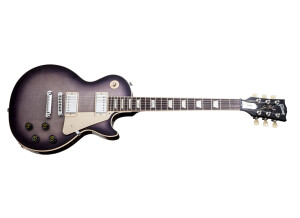
Les Paul Peace (2014)
LP-Shaped Guitar
-
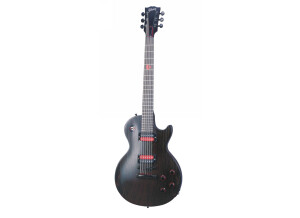
Voodoo Les Paul
LP-Shaped Guitar
-

Les Paul Classic Antique Mahogany
LP-Shaped Guitar
-
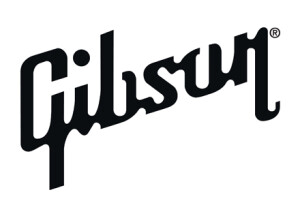
Les Paul Challenger
LP-Shaped Guitar
-
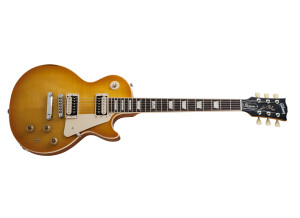
Les Paul Classic (2014)
LP-Shaped Guitar
-

Les Paul Standard (2013)
LP-Shaped Guitar
-

Les Paul Custom Black Beauty (1978)
LP-Shaped Guitar
-

Les Paul Custom Micros Interchangeables
LP-Shaped Guitar
-

Les Paul Studio Silverburst
LP-Shaped Guitar
$1,931 new (1 offer)
Other categories in Solid Body Electric Guitars
Where to buy Les Paul Studio (2012)?
Less
There are no classified ads for this product.

